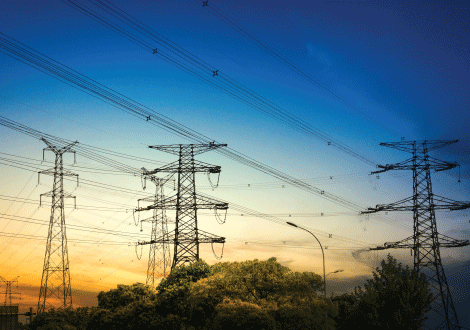Energy and Utilities
The energy and utilities industry stands at the precipice of a technological revolution, with drones and Mobile Light Detection and Ranging (LiDAR) systems leading the charge. These cutting-edge technologies are reshaping how energy infrastructure is built, operated, and maintained, offering unprecedented efficiency, safety, and precision. From inspecting power lines and pipelines to optimizing renewable energy sites, drones and mobile LiDAR from HC Robotics are driving innovation and transforming the landscape of the energy and utilities sector.
Streamlined Asset Inspections: HC Robotics Drones equipped with high-resolution cameras and LiDAR sensors are revolutionizing asset inspections in the energy and utilities industry. Traditionally, inspecting power lines, wind turbines, and other infrastructure required costly and time-consuming manual inspections. With drones, however, these inspections can be conducted swiftly and accurately from the air. LiDAR technology enables drones to capture detailed 3D models of assets, allowing inspectors to identify defects, corrosion, and vegetation encroachment with unparalleled precision.
Enhanced Safety Measures: Safety is paramount in the energy and utilities sector, where workers often face hazardous conditions during inspections and maintenance activities. Drones and mobile LiDAR systems mitigate these risks by reducing the need for personnel to perform on-site inspections in dangerous environments. By deploying drones for aerial inspections, companies can identify potential safety hazards, such as equipment failures or structural damage, without exposing workers to harm.

Optimized Infrastructure Planning: Mobile LiDAR technology is revolutionizing infrastructure planning and design in the energy and utilities industry. By mounting LiDAR sensors on vehicles or drones, companies can rapidly survey and map vast areas with unprecedented detail and accuracy. This data enables engineers to assess terrain conditions, identify suitable locations for infrastructure deployment, and optimize the design of power transmission lines, pipelines, and renewable energy installations.
Efficient Vegetation Management: Vegetation encroachment poses a significant threat to the reliability and safety of energy infrastructure, particularly power lines and pipelines. HC Robotics Drones equipped with LiDAR sensors are invaluable tools for vegetation management, allowing companies to identify and monitor vegetation growth along rights-of-way with precision. By detecting potential clearance violations early on, companies can proactively mitigate the risk of outages, wildfires, and environmental damage.
Renewable Energy Site Optimization: The proliferation of renewable energy sources, such as solar and wind power, has created a growing demand for efficient site selection and optimization. Drones and mobile LiDAR systems play a crucial role in this process by providing detailed topographic data and environmental assessments. Companies can use this data to identify optimal locations for solar and wind farms, assess terrain suitability, and maximize energy production while minimizing environmental impact.
Emergency Response and Disaster Recovery: In the event of natural disasters or infrastructure failures, drones and HC Robotics mobile LiDAR systems play a vital role in emergency response and disaster recovery efforts. Drones can quickly assess damage to energy infrastructure, such as power lines and substations, enabling utilities to prioritize repairs and restore service to affected areas more rapidly. LiDAR technology facilitates rapid terrain mapping and damage assessment, aiding in disaster recovery planning and resource allocation.
Regulatory Compliance and Environmental Stewardship: The energy and utilities industry is subject to stringent regulatory requirements and environmental regulations. HC Robotics Drones and mobile LiDAR systems assist companies in meeting these compliance obligations by providing detailed documentation of inspections, maintenance activities, and environmental assessments. By demonstrating proactive environmental stewardship and regulatory compliance, companies can enhance public trust and mitigate regulatory risks.
In conclusion, drones and mobile LiDAR systems from HC Robotics are revolutionizing the energy and utilities industry, offering unparalleled efficiency, safety, and precision in asset inspections, infrastructure planning, and environmental management. As these technologies continue to evolve, their utility and versatility will only grow, driving further innovation and transformation across the sector. Embracing drones and mobile LiDAR is not just a choice but a necessity for energy and utilities companies seeking to stay competitive, resilient, and sustainable in an ever-changing landscape.
